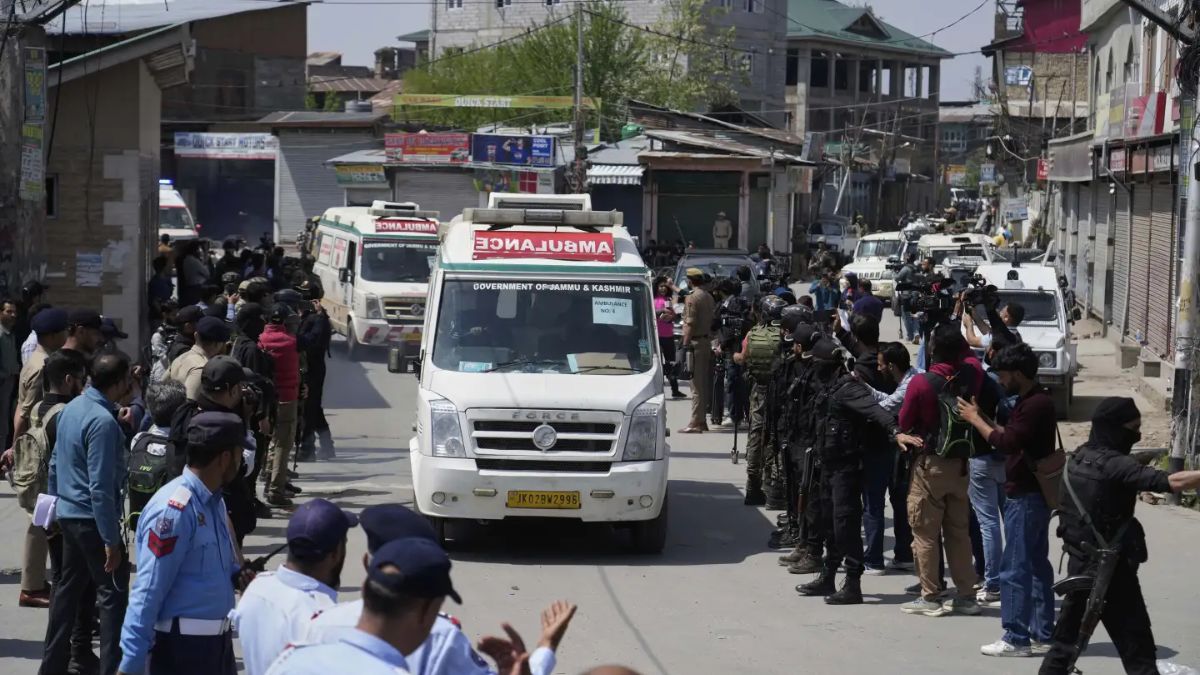The Pahalgam attack is the worst act of terror in many years, but it is not the first of its kind.
On at least two instances, terrorists carried out nearly identical attacks that also coincided with the visits of top US officials — the president in one case.
In Jammu and Kashmir’s Pahalgam, terrorists killed at least 26 people —mostly tourists— on Tuesday. They singled out non-Muslims and shot them dead. The Resistance Front (TRF), a front organisation of Lashkar-e-Taiba (LeT) , has claimed responsibility for the attack.
In 2000, terrorists similarly killed 35 Sikhs in J&K’s Chittisinghpora on the eve of then-US President Bill Clinton’s visit to India. Then, in 2002, terrorists killed 23 people, including 10 children, in J&K’s Jammu while a top State Department official was visiting India.
Pakistan-backed terrorist groups are believed to be behind both of these attacks — just like the Pahalgam attack.
The Chittisinghpora massacre
On the eve of then-US President Clinton’s visit to India, terrorists killed 35 Sikhs in Chittisinghpora village in J&K’s Anantnag district on March 20, 2000.
Just like the Pahalgam attack, terrorists wore military fatigues during the Chittisinghpora attack and villagers assumed that they were soldiers.
Terrorists gathered men at two gurdwaras in the village and killed them.
Mohinder Singh, a shopkeeper in the village, told Rediff News that terrorists were wearing army fatigues and they used the disguise to make two youngsters guide them through the village.
“It was around 7.50 in the evening when we heard the sound of gunfire and the cries of those who were killed. In a matter of minutes, the village became a cremation ground. While 17 were killed in front of this gurdwara, another 18 were killed in the other. If you go out you will see the bullet marks on the walls in both places,” said Singh.
Impact Shorts
More ShortsWriting for Rediff at the time, Mukhtar Ahmad noted that the massacre was the first time that Sikhs had been targeted in Kashmir.
Previously, minority Hindus from the Kashmiri Pandit community were generally attacked by terrorists. In January 1990, systematic and coordinated murderous campaign across Kashmir forced most of the Pandits in the Valley to flee for their lives. Nearly all those who fled continue to live outside of their ancestral homeland decades after terrorists forced them to flee.
Around the same time that Sikhs were killed in Anantnag, terrorists had also attacked a police station in Kashmir’s Barramullah with assault rifles and grenades. Ahmad noted in his article that the attack in Barramullah and the massacre in Chittisinghpora were carried out despite the state being put on alert in light of Clinton’s visit.
Pakistan-backed Lashkar-e-Taiba (LeT) and Hizbul Mujahideen were behind the Chittisinghpora massacre, then-National Security Advisor Brijesh Mishra said at the time.
An imprisoned LeT member later admitted in an interview that he and his fellow terrorists had carried out killings in Chittisinghpora.
Suhail Malik, a native of Pakistan’s Sialkot, said he did not have any regrets.
“The Koran teaches us not to kill innocents. If Lashkar told us to kill those people, then it was right to do it. I have no regrets,” Malik told The New York Times.
They were murdered because I was there, said Clinton
Weeks after the Chittisinghpora massacre, Clinton admitted that terrorists had carried out the attacks only because of his visit to India.
“I’m sure they were murdered because I was there. Those people lost their lives because I went to India and to Pakistan,” said Clinton at the time, as per UNI.
It was the first visit to India by a US president in 22 years. It was also the beginning of the warming of ties between India and United States in the post-Cold War world after decades of on and off bitterness during the Cold War.
In a reference to terrorists who carried out the attacks, Clinton said that those behind the attacks do not want the dispute to be solved.
“The most heartbreaking thing that happened on my trip to the Indian subcontinent is that about 40 Sikhs were murdered in Kashmir. People who don’t want their turmoil to be eased used my trip there as a pretext to highlight the difficulties. And somebody, we don’t know who, killed 40 perfectly innocent people — who, I might add, had never before been targeted in all the conflicts in Kashmir,” said Clinton.
The Kaluchak massacre
Two years later, terrorists struck in Jammu when then-Assistant Secretary of State for South Asian Affairs Christina B Rocca was visiting India.
Terrorists on March 14, 2002, first attacked a public bus in Jammu’s Kaluchak and then attacked the family quarters of the Indian Army.
Overall, terrorists killed 23 people, including 10 children, eight women, and five Army personnel. They also injured 34 people.
As children as young as four-year-old were killed, the attack sparked considerable outrage at the time.


)

)
)
)
)
)
)
)
)



